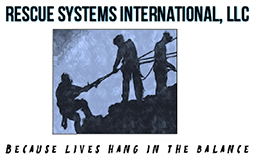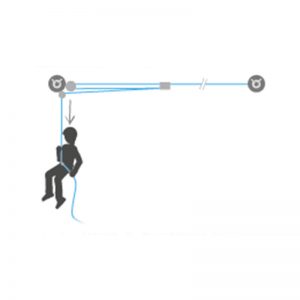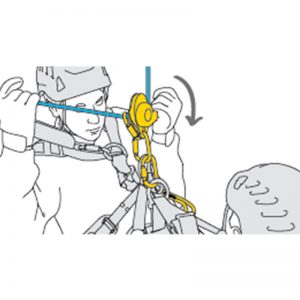The belay rope must hold the falling load in the event of primary system failure.
When manipulating the device to give slack, the operator must not risk compromising the ability of the device to lock the rope if needed. For example, s/he must not hold the handle with their whole hand, because in the event the primary rope breaks, the most likely reflex would be to clench the handle, delaying the locking of the belay rope.
The energy developed in a fall increases considerably as the load increases. Above 100 kg and up to 250 kg, the user must be experienced and trained.
Precautions:
– The user must always hold the brake side of the rope.
– The belay rope should always be taut to minimize impact force if the work rope breaks.
– The greater the mass, the higher degree of vigilance required of the operator; above 100 kg, any fall represents a significant amount of energy that must not be taken lightly.
Be mindful of the clearance; if the work rope breaks, the load will drop to a lower level due to stretch of the belay rope. Warning: the greater the mass, the greater the clearance.
Belay technique for raising
The user must always hold the brake side of the rope.
Belay technique for lowering
The user must always hold the brake side of the rope.
The cam of the pre-2019 I’D S, I’D L and I’D EVAC is equipped with a support zone, allowing locking to be temporarily disengaged when the rope is not loaded.
On the pre-2019 I’D S and L, tilting the device can help rope glide.







Reviews
There are no reviews yet.